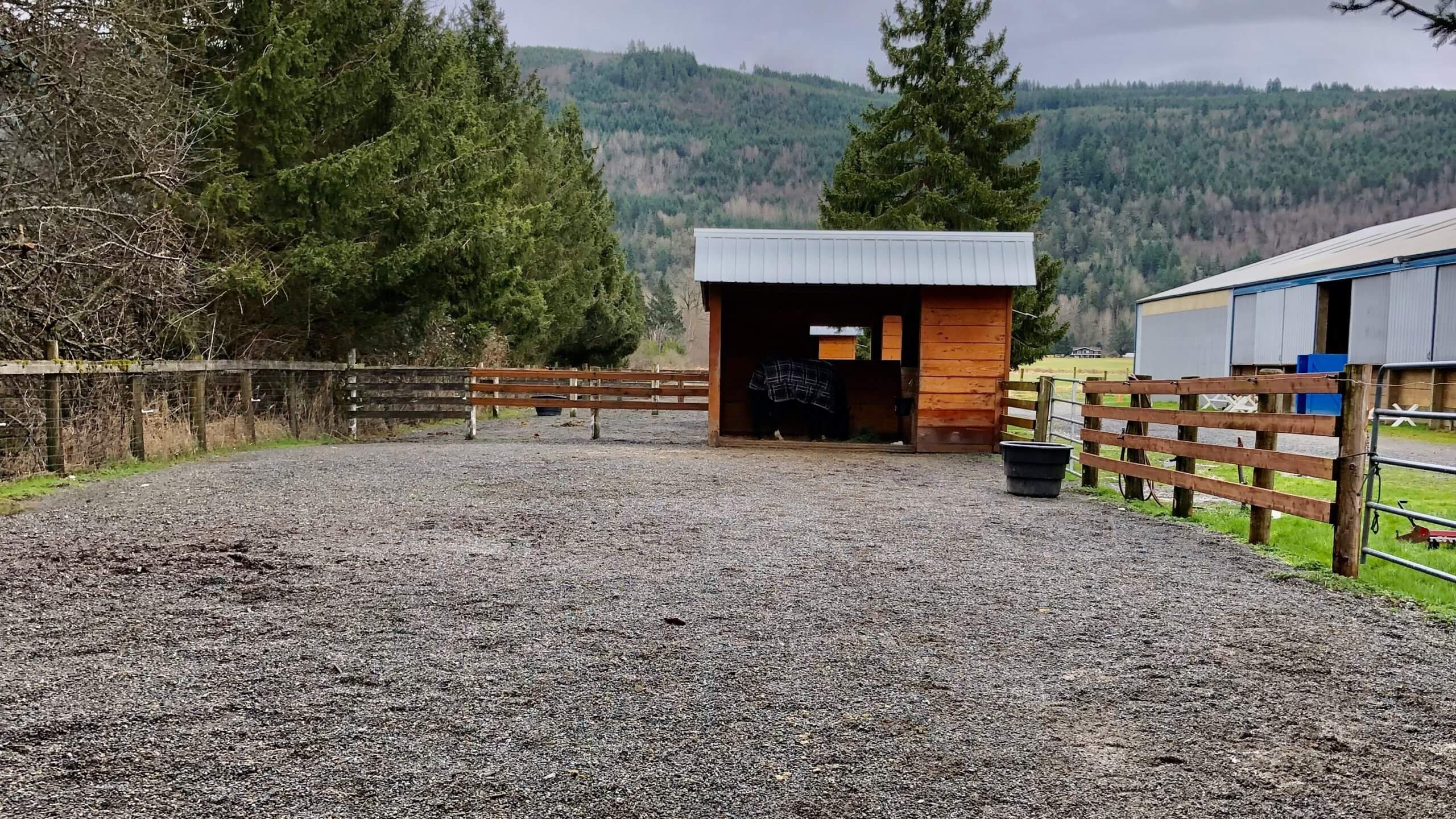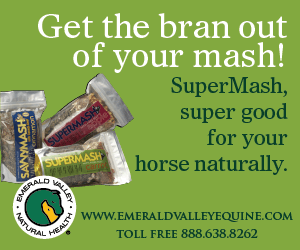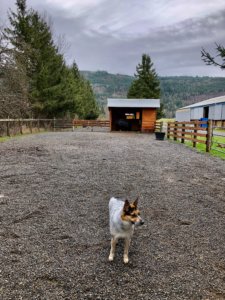
Footing is an important consideration for confinement areas. Using some type of footing, at least in the high traffic areas, will reduce mud by keeping your horse off the soil surface and avoiding erosion. Less mud equals less chance of nutrients and sediments running off and polluting surface waters, too.
Different parts of the country offer different footing options. In choosing a footing some considerations include:
- Will it be a suitable, safe surface for my horse to run, stand, and lie on?
- Can I easily pick manure from the footing material?
- Will the footing material contaminate my compost pile in any way?
- Will it be very dusty in the dry months?
- How will it work in the winter?
- Will this footing be used in a steeply sloped area which will cause footing material to migrate?
- What is the cost and availability?
- Is it in any way toxic to horses, humans, or other animals?
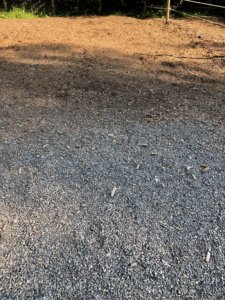
Hog Fuel: In some parts of North America, hog fuel (wood chips) is available and can provide an excellent footing. Often, it’s made from ground-up fir or cedar trees. Be careful that no toxic trees are in the mix as many landscaping trees can be deadly toxic. Wood chip footing is good for odor control, but it can decompose quickly, especially in wet climates, creating more mud.
Gravel (crushed rock, no larger than 5/8 inch) works well, particularly in wetter conditions or with more organic soils. Gravel surfaces are very easy to pick manure of off but be sure to offer a softer area, such as a matted stall, for horses to sleep on. The angular nature of gravel footing will help it “lock in place” preventing migration, an important consideration for slopes.
Sand is a popular footing choice and is available in most parts of the country. It is horse-friendly; horses love to lie and sleep on sand. Coarse washed sand (versus finer varieties) drains well and is less dusty in summer months. Sand is also an excellent choice for winter areas that freeze as it’s easier to remove manure from frozen sandy footing with its small particles than from the larger frozen gravel. One caveat: avoid feeding horses on sand. Ingesting sand (or dirt particles) with hay can result in sand colic, a serious digestive disorder. Use feeders or sweep stall mats clear before every feeding to be sure they are sand-free.
Use at least three to six inches of whatever type of footing material you choose. If there is already existing mud and organics in an area, remove as much as possible of the organic material before adding footing.
Consider trying a combination of footing types, perhaps using the gravel in the high traffic areas and hog fuel in the rest. Before settling on one choice, visit nearby equestrian facilities to find out what footing options worked for them and where they purchased them.
Finally, be present when your footing is delivered to be sure what you ordered is what’s delivered.
Check out the Horses for Clean Water website for information on online classes, virtual individual consultations, available tip sheets and other resources for horse keeping and land management education.
Published in the September 2020 Issue:
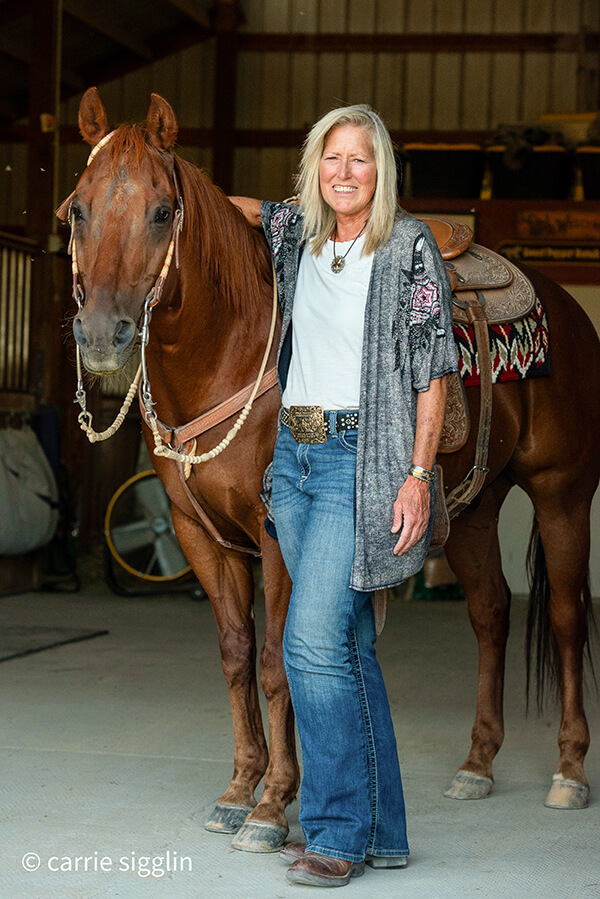
Alayne Blickle began in the 1990’s as a pioneer in water conservation and natural resources conservation by creating the entrepreneurial consulting business, Horses for Clean Water, an award-winning internationally acclaimed education program that looks for horse-healthy, nature-based solutions to land management challenges. She continues this work today partnering with agencies, organizations, and horse owners throughout North America and worldwide. She is a regularly contributing writer and photojournalist to several equine publications.
Alayne lives with her horse trainer husband, Matt Livengood, in southwestern Idaho where they raise and train AQHA horses and mustangs on their eco-friendly horse ranch. Contact her through the Horses for Clean Water website or through their ranch website Sweet Pepper Ranch.
For more information contact Alayne at [email protected] or 206-909-0225.


